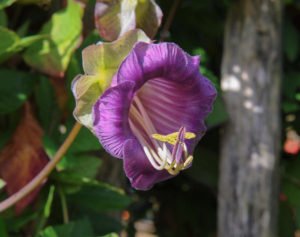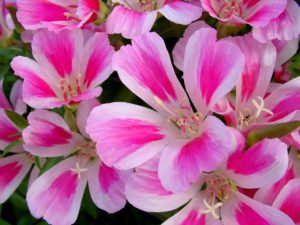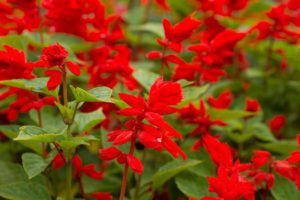
Chrysanthemum is a symbolic flower, bright, diverse and a little sad. Because it blooms in our gardens in autumn, when the days are shorter, the nights colder, and the weather is less pleasant. But it is no accident that chrysanthemum blooms in autumn! After all, it is a short-day plant, and the reduction of the light period of the day stimulates the formation of inflorescences. That is why the period of mass flowering of chrysanthemums falls on such a gloomy and uncomfortable time of year.

Ch. koraiensis Nakai — the most popular type of hybrid origin, varieties of which differ in the timing of flowering, Bush height, structure and size of inflorescences, color of tongue and tube flowers. Its varieties are divided by the shape of the inflorescences into camomile, tongue flowers in several rows, and double flower; the size of the inflorescences into small (up to 7 cm) and large (from 7 to 10 cm).
Mass flowering of chrysanthemums occurs at the end of August–September. Some varieties have earlier or later flowering periods.
In height, chrysanthemums are divided into low, that is, border (up to 30 cm), medium-tall (30 to 50 cm) and high (50 cm to 1 m).

Choosing a chrysanthemum
Choosing from a wide variety of plant varieties for your garden, you should remember that the larger and more Terry inflorescence, the more diligence will be required for its cultivation, the more problematic their wintering, and such chrysanthemums bloom later than others. And the simpler the inflorescence, the more hardy the variety is, and the lower the plant, the earlier it blooms.
Planting flowers
If you have decided on a choice and have already bought plants, then it’s time to start planting, and for this you should touch the basics of agricultural technology.
Unlike most perennial plants, it is better to plant chrysanthemums not in the fall, but in the spring, when the threat of return frosts passes, because young immature plants are strongly frozen.
The landing place must be protected from the wind, where there is at least 5-6 hours of daytime sun.
Chrysanthemum-a plant that can not grow in one place for longer than 2-3 years, as it requires regular division. But this disadvantage is compensated by their undeniable advantage — the ability to grow very quickly. For example, if you plant a small nondescript stalk in the spring, you will get a fully developed flowering Bush in the fall. Therefore, when planting, you must remember that chrysanthemums love freedom, they need space for development and growth. So plant freely, but don’t go deep into the roots. The soil should be loose, full of organic substances and with a slightly acidic reaction, and most importantly — well-drained and water-permeable, since chrysanthemums can not stand water stagnation. And if there is such a probability, it is recommended to plant them on high ridges. Loam is best suited for chrysanthemums, on sandy loam soils there is a high probability of their freezing out. So in this case, it is better to cover the plants slightly for the winter.
Traditionally, in the literature, it is recommended to cut off chrysanthemum bushes at a height of 10-15 cm in the fall and make them an easy shelter for the winter — for example, cover the Bush with an ordinary wooden box, pulling 2 layers of medium-density lutrasil on top.
But since the practice of growing chrysanthemums shows that these plants, like roses in our strip, do not die from freezing, but from overheating, collectors have developed other agrotechnical techniques for their wintering in the soil: the plant is cut off only the tops with inflorescences and the bushes themselves do not hoe. Shelters are not used, and for snow retention around the bush, branches of are stuck into the ground. This method has proven itself well and allows chrysanthemums to successfully overwinter.
Watering chrysanthemums
What about watering, because as noted above, chrysanthemums are not lovers of abundance of moisture? In early spring, we water the plants at the rate of 0.5 liters per Bush, and in early summer — 2-3 times a week. With the appearance of unopened baskets and at the beginning of flowering, watering is gradually reduced, and during flowering we stop altogether.
Plants Reproduction
Chrysanthemums are fairly well propagated by cuttings. To do this, in the spring, cut off young, thin cuttings 7-10 cm long with a sharp pruner, tear off the lower leaves, process the cut of the cuttings and stick them in pre-moistened perlite. When the plants begin to grow, pinch them over the 6th leaf. Rooted and grown seedlings are planted in a permanent place in June.
During the growing season, chrysanthemums must be pinched several times. If in the spring you bought a Bush with already tied buds, before planting them, you must always pluck everything. In adult plants, the shoots are pinched over 6-8 leaves. To form beautiful bushes and provide plants with lush flowering, the buds are plucked until the end of June. It should be remembered that the interval between the last pinching and the beginning of flowering should be at least 30 days.
Additional fertilizing
Chrysanthemums, like all plants, are responsive to fertilizing. In the spring, nitrogen fertilizers should be used for their growth and building up the leaf mass, during the formation of baskets — phosphate, in the fall — potash. If you want your chrysanthemums to bloom in spring 2-3 weeks earlier, dig out the bushes and put them in a bucket for 2-3 minutes in a pre-prepared warm, but not higher than +36 °C, saturated solution of potassium permanganate. If it is not possible to dig out the entire Bush, pour the earth around the Bush with the same warm solution.




Leave a Reply